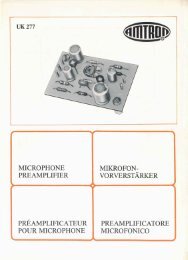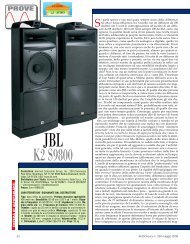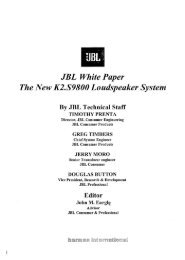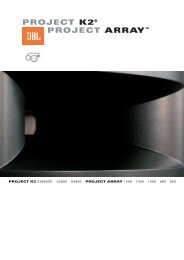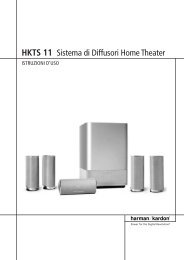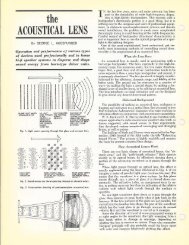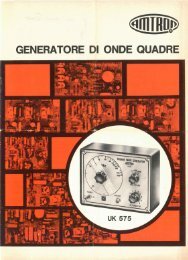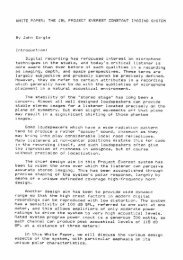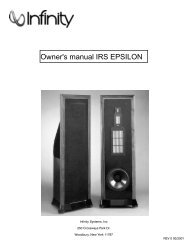MEASUREMENTS
MEASUREMENTS
MEASUREMENTS
Create successful ePaper yourself
Turn your PDF publications into a flip-book with our unique Google optimized e-Paper software.
Luminance Non-Linearity<br />
Figure 80. Unmodulated Staircase signal.<br />
Figure 81. An example of luminance non-linearity<br />
distortion.<br />
• DEFINITION<br />
Luminance non-linearity, or differential luminance, is present if<br />
luminance gain is affected by luminance level. In other words,<br />
there is a non-linear relationship between the input and output<br />
signals in the luminance channel. This amplitude distortion is a<br />
result of the system's inability to uniformly process luminance<br />
information over the entire amplitude range.<br />
The amount of luminance non-linearity is expressed as a percentage.<br />
Measurements are made by comparing the amplitudes<br />
of the individual steps in a Staircase signal. The difference<br />
between the largest and smallest steps, expressed as a percentage<br />
of the largest step amplitude, is the amount of luminance<br />
non-linearity distortion. Measurements should be made at both<br />
low and high APL; the worst result should be quoted.<br />
• PICTURE EFFECTS<br />
People are not particularly sensitive to luminance non-linearity<br />
in black and white pictures. If large amounts of distortion are<br />
present, however, you might notice loss of detail in the shadows<br />
and highlights. These effects correspond to crushing or clipping<br />
of the black and white.<br />
In colour pictures, however, luminance non-linearity is often more<br />
noticeable. This is because colour saturation, to which the eye<br />
is more sensitive, is affected. (Colour saturation is affected<br />
whenever the ratio between chrominance and luminance<br />
amplitude is not accurately transferred through a system.)<br />
• TEST SIGNALS<br />
Luminance non-linearity should be measured with a test signal<br />
which consists of uniform-amplitude luminance steps. Unmodulated<br />
5 step or 10 step Staircase signals (without chrominance) are<br />
typically used.<br />
If an unmodulated signal is not available, the measurement can<br />
also be made with a Modulated Staircase. This is generally not<br />
good practice, however, since both differential gain and luminance<br />
non-linearity can have the same net effect on the signal.<br />
• MEASUREMENT METHODS<br />
Luminance non-linearities are quantified by comparing the step<br />
amplitudes of the test signal. Since the steps were initially all of<br />
uniform height, any differences are a result of this distortion.<br />
The waveform in Figure 81 exhibits luminance non-linearity<br />
distortion — note that the top step is shorter than the others.<br />
56



